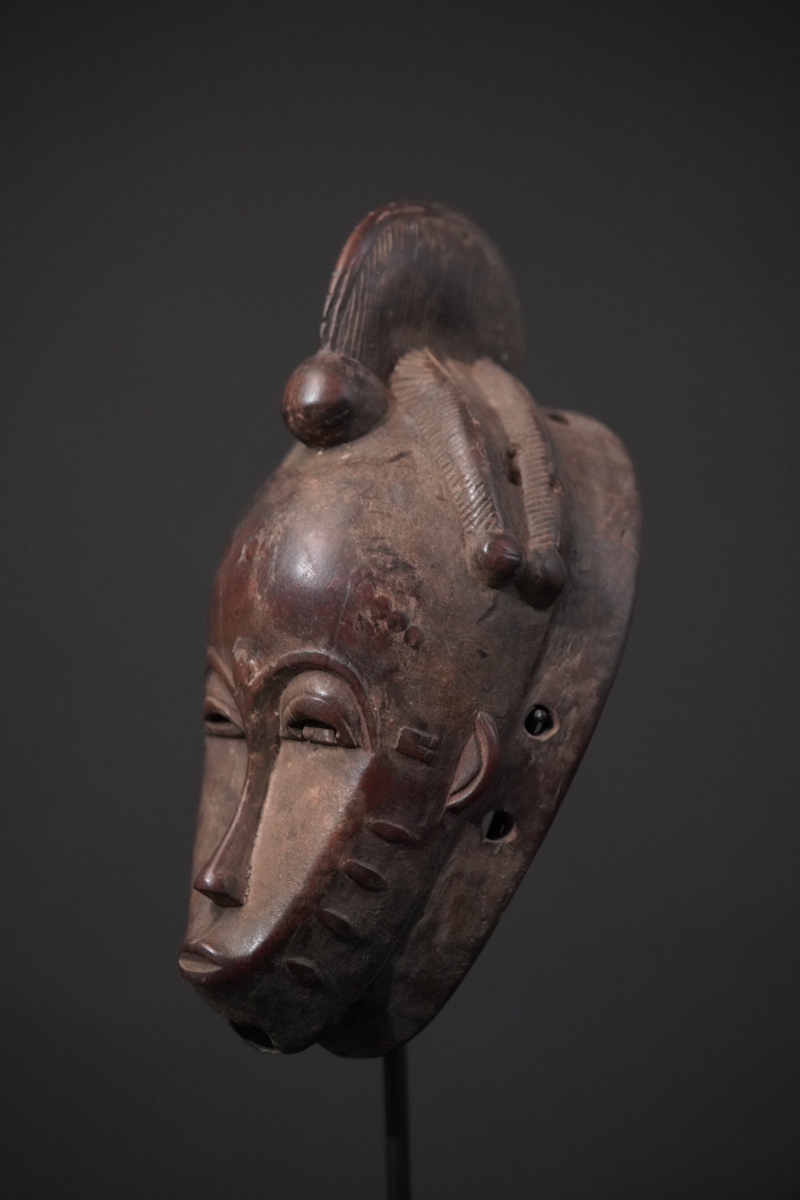|
A Baule/Yaure mask, crowned by a big curl touching the forehead, curved thin nose and small mouth; partly shiny age patina with signs of age and use. Yaure masks are linked to men's associations organizing funerals to honor the spiritual power of the deceased. The masks come out for a single occasion, death, this disturbance of order that needs to be restored. Alain-Michel Boyer compares them to "dynamic forms located at the point of articulation of life and death" («formes dynamiques situées au point d’articulation de la vie et de la mort»). The Lomana mask, accompanied by incantations, dances by grazing the body of the deceased, ritualistically transforming him or her into an ancestor who is supposed to help and protect his or her descendants. Masks are considered among the Yaure people to be very powerful and dangerous objects. Women are not allowed to see the masks and it is impossible for men to approach them outside the ritual context; moreover, they are subject to numerous prohibitions, sexual, choreographic and aesthetic. Lit.: Les Yohouré de Côte d’Ivoire. Faire danser les dieux, Lausanne, Ides et Calendes, 2016. Traduction américaine de Jane Todd, The Yaure of Côte d’Ivoire, Make the Gods Danse, Geneva-Cape Town, Cultural Foundation Musée Barbier-Mueller, 2016. Arts de la Côte d’Ivoire. Autour des Yohouré, Genève, Musée Barbier-Mueller, 2016. sold Height: 28 cm |
 photo: wolfgang-jaenicke.com, for more information, please write us an e-mail with the identification number of the photo identification no. BBC09155.jpg |